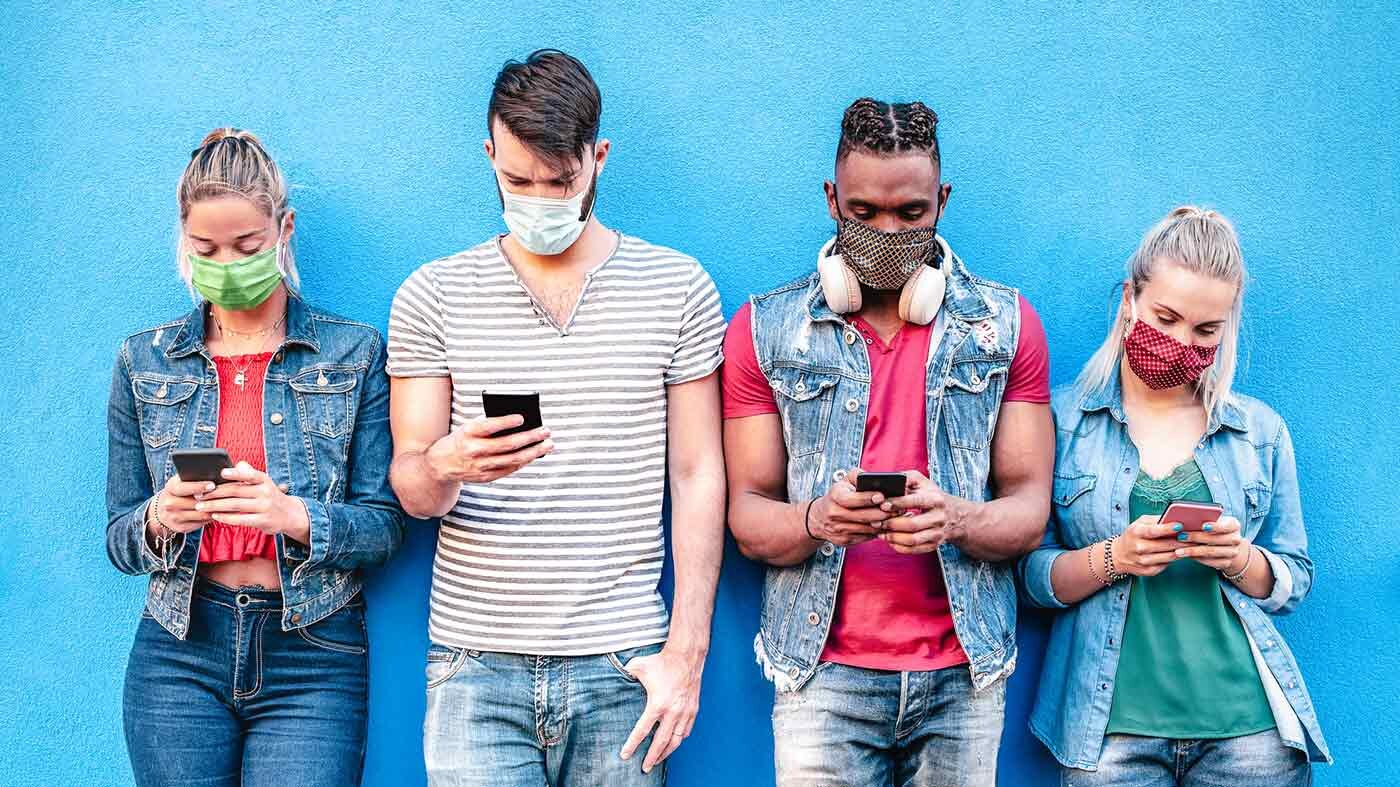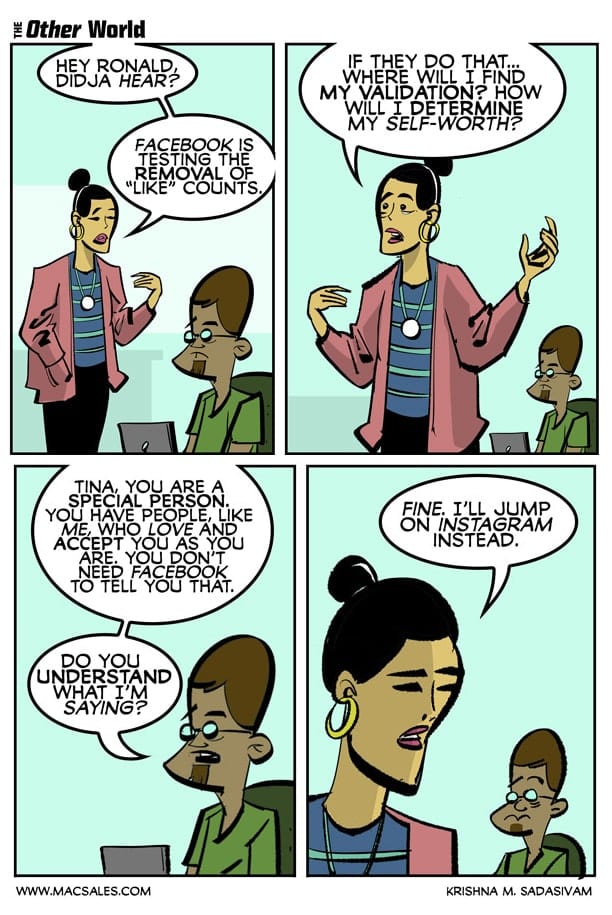As we come out of lockdown hibernation, many of us still find ourselves unready and unwilling to hold face-to-face conversations with other human beings. Millennials, in particular, were already known for being antisocial – favoring polished digital interactions to face-to-face contact before the pandemic hit.
A PSA for store associates on behalf of millennials everywhere:
Please speak slowly. Don’t touch us. Don’t smile too aggressively. And please, please don’t try to upsell us. (Navigating that type of uncomfortable social situation takes a level of interpersonal prowess we’ve long forgotten.)
It’s not that we don’t want to interact with restaurant and store associates… it’s just that we have to get used to it again. Many of us still experience a sense of panic when our eyes behold the bottom half of another human being’s face. It’s a re-acclimation process.
Maybe that’s why Messenger conversations between people and businesses grew by over 40% in 2020 alone. And why social media companies are tripping over themselves to ensure their platforms are the most optimized for shoppable ads.
The Data Behind the Exodus to Social Media

2021 is social media marketers’ time to shine. After over a year of mask-wearing and extreme social isolation, only 44% of consumers look forward to returning to malls. Customers are still doing much of their shopping on social media while they reacclimate to normal life. In fact, B2B companies report that social media advertising was used by 83% of marketers last year alone.
Selling on social is a lucrative venture. Social media marketing ranked second in investment success (29%) – right behind search engine marketing (33%). And marketing spend makes up 11.7% of company budgets in 2021.
TikTok, Facebook, and Pinterest… Oh My!
It should come as no surprise that social platform owners are doing everything they can to create effective, shoppable ad opportunities for businesses. It feels like every week there’s a new partnership being announced between brands or marketplaces and social media companies. Let’s take a look at three of the most notable.
TikTok:

TikTok may be newer to the scene, but that hasn’t stopped it from attracting over 100 million users to the platform. The unique advantage of TikTok over other shoppable platforms is its younger-skewing audience. Younger consumers are the most likely to make purchases on social media, which might explain why TikTok’s collaboration with Shopify has been such an incredible success. Kantar found that 83% of TikTok’s audience have made purchases inspired by its trending content.
TikTok recently announced plans to make its Shopify partnership available in five European countries, including Italy, France, Spain, Germany, and the U.K.
Facebook/Instagram:

Why deal with a business in person when you can do it online? Instagram introduced Shops in 2020. Creating shoppable stories was the next logical step for the platform that birthed the influencer marketing craze. A whopping 90% of marketers in the U.S. name Instagram as the most important social media platform for influencer marketing. The platform also claims that 70% of “shopping enthusiasts” turn to Instagram for product discovery. The definition of what constitutes a “shopping enthusiast,” however, is nowhere to be found.

Facebook is vying for a slice of its subsidiary’s success with Facebook Shops, launched in May of 2020. The company is beta testing a new feature called Login Connect on Messenger. According to Facebook’s press release, Login Connect would enable businesses to create new customers by sending personalized messages on the platform. If customers opt into the dialogue, the business would then be able to send customers offer and product recommendations and personalize the customer service experience online.
It’s beginning to look like all of Zuckerberg’s Messenger optimization efforts are paying off. Conversations between people and businesses on Facebook Messenger and Instagram grew by more than 40% this year alone.
Pinterest:

Speaking of platforms that lend themselves to the inception of great (and appallingly bad) ideas, Pinterest Shopping is on the rise – attracting new brands and customers to the platform. Pinterest added more than 100 million monthly active users to its database in 2020. And 6x more businesses used Pinterest Shopping Ads in the fourth quarter of 2020.
Pinterest Shopping takes an interesting approach with the data-backed assertion that shoppers who take their time to make a purchase ultimately purchase higher-ticket items.
Will Customers Keep Shopping on Social Channels?
I have some bad news: People are going to start using the word “seamless” to describe customer expectations again. And, once again, social media will become a steppingstone along the shopping journey. Some customers will use platforms like Pinterest as a vehicle for discovery, others will convert on Facebook Messenger, and still others will find products on Instagram or TikTok and make their final purchase in-store. But regardless of how they use the platforms, social media shopping is here to stay.











As I read this, I think we are living on two different planets. In Texas, it’s very rare for me to see anyone wearing a mask anymore. In fact, the last time I saw anyone wearing a mask was three weeks ago at the airport. Where I live, we have been living 100% normally for the last three or four months. You know, once you have been immunized, you are …… immune. I was immunized in February. I’ve been going to a crowded night clubs, sold out movie theaters, and packed restaurants. All without a mask. I feel terrific. Thank you Pfizer.
“Social” media is anything but social.